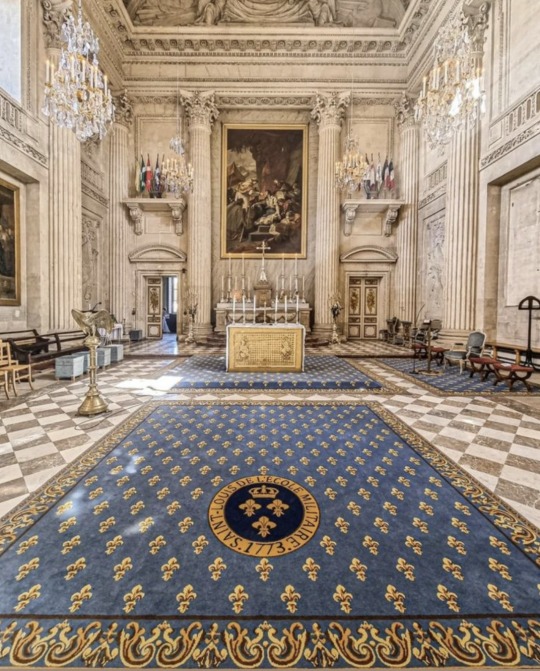#Military School in Paris
Text

Entrance of the Cavalry Military School in the 7th district of Paris
French vintage postcard
#the cavalry military school#historic#photo#briefkaart#vintage#th#entrance#sepia#school#7th#photography#carte postale#paris#postcard#district#postkarte#france#postal#tarjeta#ansichtskarte#french#old#ephemera#postkaart#cavalry#military
6 notes
·
View notes
Text
all the time, gotta walk away, for a moment, take a break, infuriated, when reading about European implementation of forced labour in plantations (especially in the nineteenth and early twentieth centuries, whether it's sugarcane or rubber or tea or banana, whether it's British plantations in Assam or Malaya; Belgian plantations in Congo; French plantations in West Africa; Dutch plantations in Java; United States-controlled plantations in Haiti or Guatemala or Cuba or Colombia). and the story is always: "and then the government tried to find a way to reimpose slavery under a different name. and then the government destroyed vast regions of forest for monoculture plantations. and then the government forced thousands to become homeless and then criminalized poverty to force people into plantation work or prison labor." like the plantation industries are central (entangled with every commodity and every infrastructure project) and their directors are influencing each other despite spatial distance between London and the Caribbean and the Philippines.
and so the same few dozen administrators and companies and institutions keep making appearances everywhere, like they have outsized influence in history. like they are important nodes in a network. and they all cite each other, and write letters to each other, and send plant collection gifts to each other, and attend each other's lectures, and inspire other companies and colonial powers to adapt their policies/techniques. not to over-simplify, but sometimes it's like the same prominent people, and a few key well-placed connections and enablers in research institutions or infrastructure companies. they're prison wardens and lietuenant governors and medical doctors and engineers and military commanders and botanists and bankers, and they all co-ordinate these multi-faceted plans to dispossess the locals, build the roads, occupy the local government, co-erce the labour, tend the plants, ship the products.
so you'll be reading the story of like a decade in British Singapore and you're like "oh, i bet that one ambitious British surgeon who is into 'economics' and is obsessed with tigers and has the big nutmeg garden in his backyard is gonna show up again" and sure enough he does. but also sometimes you're reading about another situation halfway across the planet and then they surprise you (because so many of them are wealthy and influential and friends with each other) and it'll be like "oh you're reading about a British officer displacing local people to construct a new building in Nigeria? surprise cameo! he just got a letter from the dude at the university back in London or the agriculturalist in Jamaica or the urban planner from Bombay, they all went to school together and they're also all investors in the same rubber plantation in Malaya". so you'll see repeated references to the same names like "the British governor of Bengal" or "[a financial institution or bank from Paris or New York City]" or "[a specific colonial doctor/laboratory that does unethical experiments or eugenics stuff]" or "lead tropical agriculture adviser to [major corporation]" or "the United Fruit Company" and it's like "not you again"

324 notes
·
View notes
Text

The Holocaust Whistle-Blower: Jan Karski
He tried to save the Jews of Europe.
Jan Karski was a Polish resistance fighter and diplomat who warned world leaders about the Nazi extermination of European Jews. Tragically, none of the leaders of Allied countries did anything to stop the atrocity – including U.S. President Franklin Roosevelt.
Jan was born in 1914 in Lodz, Poland to a devout Catholic family. His father died when he was a small child, and his mother struggled to provide for her eight children. They lived in a neighborhood of overcrowded tenements where most of the residents were Jewish. Jan attended military school where he trained to be a mounted artillery officer and graduated first in his class.
He then trained to be a diplomat, and between 1935 and 1938 he worked at Polish consulates in Romania, Germany, Switzerland and the UK. At the beginning of 1939 Jan returned to Poland to work at the Polish Ministry of Foreign Affairs. In the fall of that year, World War II started when Germany invaded Poland. Jan – Officer Karski – was called up to lead a unit of the Krakow Cavalry Brigade. On September 10 the Krakow Army was defeated by the Germans in the Battle of Tomaszow Lubelski and Jan was captured as a prisoner of war. He managed to escape and went to Warsaw, where he joined the SZP, the first resistance movement in occupied Europe.
At that time, the Polish Government in Exile, overthrown by the Germans, was based in Paris. Jan organized secret courier missions to transport important information to the exiled Polish leaders. He traveled frequently between France, Great Britain and Poland, at great risk to himself. In July 1940 his luck ran out and he was arrested by the Gestapo while traveling through Czechoslovakia on his way to France. He was imprisoned and tortured so badly that he was transferred to a hospital. Fortunately Polish resistance leaders found out where he was and managed to smuggle him out of the hospital.
Returning to Warsaw, Jan served in the information bureau of the Polish Home Army, the main resistance movement in Poland. He and other Polish resistance leaders were horrified by the Nazi persecution of Polish Jews, and increasingly aware that the Germans planned to exterminate millions of them. Desperate to alert the rest of the world about the destruction of Polish Jewry, they chose Jan to gather evidence and then travel to Paris to report to prime minister Wladyslaw Sikorski, leader of the Polish government in exile.
Jan worked with Jewish resistance leader Leon Feiner, who smuggled him into the Warsaw Ghetto to observe conditions there. Jan later described the experience: “My job was just to walk. And observe. And remember. The odour. The children. Dirty. I saw a man standing with blank eyes. I asked the guide, what is he doing? The guide whispered, ‘He’s just dying.’ I remember degradation, starvation and dead bodies lying on the street. We were walking the streets and my guide kept repeating, ‘Look at it, remember, remember.’ And I did remember. The dirty streets. The stench. Everywhere. Suffocating. Nervousness.”
Jan also visited a transit camp for Jews on their way to death camps. He took photographs of what he saw there and in the ghetto, and carried them out of the country on microfilm. His testimony and pictures formed the first accurate account of the genocide of European Jews. Polish Foreign Minister Edward Raczynski published Jan’s reports in a pamphlet which was widely distributed. Jan traveled to several countries and met with high-level government officials including British Foreign Secretary Anthony Eden, but they either didn’t believe him, or they feared the political consequences of helping Jewish refugees.
In July 1943 Jan traveled to the United States, where he personally met with President Franklin D. Roosevelt in the Oval Office. Jan vividly described the Warsaw Ghetto and the concentration camps where Jews were being murdered en masse. After telling his grim tale, Jan expected Roosevelt to be emotionally affected and want to learn more. Instead, Roosevelt displayed no reaction and didn’t ask a single question. The president heard first-hand about the murder of millions of Jews – and saw the evidence – but he refused to help in any way and showed Jan the door. Ironically, the majority of American Jews voted for Roosevelt, and many Jews still revere him.
While in the States, Jan met with other important personages including Jewish Supreme Court Justice Felix Frankfurter. Jan told his story, answered a few questions, and then the great jurist said, “I am unable to believe what you have told me.” Like Roosevelt, he chose to ignore the inconvenient truth of what was happening to the Jews of Europe. A Polish diplomat later confronted Justice Frankfurter and asked if he thought Karski was lying. “I did not say that this young man was lying. I said that I was unable to believe what he told me. There is a difference.” The difference was likely not clear to the millions of European Jews being tortured and murdered while a Jewish Supreme Court justice chose ignorance over a difficult reality.
Jan Karski’s identity was discovered by the Nazi occupiers in Poland, and he was unable to return home. He stayed in Washington DC, and earned his PhD at Georgetown University. After graduating, he began teaching at the Georgetown School of Foreign Service. Jan remained at Georgetown for forty years, teaching generations of American political leaders about East European and international affairs and comparative government. Jan’s students included Bill Clinton and Madeleine Albright. Jan wrote several books about the Holocaust, and gave lectures around the world about the horrors he witnessed, and the tragic inaction of world leaders. He was determined to make sure the Jews of Poland were not forgotten.
Jan said that he had two missions in life. The first was to bear witness to the genocide of the Jews of Europe. The second was to reveal the tragic indifference of Allied leaders.
In 1965, Jan married Pola Nirenska, a Polish Jew who was an acclaimed dancer and choreographer. He adored her, but Pola was scarred by losing 75 (!) members of her extended family in the Holocaust, and suffered from mental health issues. Pola tragically killed herself in 1992.
Jan Karski was honored as Righteous Among the Nations by Israeli Holocaust Memorial Yad Vashem. He was made an honorary citizen of Israel and received many other awards and honors in Poland, the United States, and Israel. He was nominated for a Nobel Prize. In 2000, Jan Karski was formally recognized as a human rights hero by the UN General Assembly. Soon after, Jan died in Georgetown at age 86. Jan continued to be honored posthumously, and in 2012 President Obama awarded him the country’s highest civilian honor, the Presidential Medal of Freedom. He has been the subject of multiple books, plays and movies. There is a statue of Jan sitting on a bench on Madison Avenue in New York City.
For bearing witness to genocide and speaking truth to power, we honor Jan Karski as this week’s Thursday Hero.
88 notes
·
View notes
Photo

On this day, 4 July 1913, Black Spanish civil war fighter, Holocaust survivor and electrician Carlos Greykey was born to parents from the then-Spanish colony of Equatorial Guinea. His birth name was José Carlos Gray Molay, and he later was given the warrior name "Greykey". His parents moved to Barcelona, and his mother worked as a cleaner, and despite his poor working class background, Greykey was able to attend medical school. His studies were disrupted by the right-wing military coup of general Francisco Franco, and he soon volunteered to fight in the civil war on the Republican side. With Franco's victory, Greykey was forced into exile in France, like tens of thousands of other Republicans. And like many other Spanish refugees, he later joined the French resistance to Nazi occupation. He was eventually captured by the Nazis on the Rhine front and sent to the Mauthausen concentration camp. There, he was assigned the red triangle of political prisoners. Greykey's language skills, which included the ability to speak English, French, German, Spanish and Catalan, as well as the curiosity of the Nazis, led to him being appointed as a personal assistant to senior German officers. The Nazis then dressed Greykey in an old Yugoslav army uniform to give him the appearance of a bellhop. Greykey remained close with his fellow Spanish detainees, and with them took part in a rebellion in the camp shortly before its liberation by US troops. Upon his release, Greykey was unable to return to Spain, as the Franco regime was still in power. So he returned to France, living in Paris and working as an electrician. In his later years, Greykey again became active in opposing the brutal dictatorship in Equatorial Guinea of Francisco Macías Nguema, a former official under Spanish colonial rule. He remained a supporter of the establishment of democracy in the country until his death in 1982. Learn more about the Spanish civil war in our podcast episodes 39-40: https://workingclasshistory.com/podcast/e39-the-spanish-civil-war-an-introduction/ https://www.facebook.com/photo.php?fbid=655755199931032&set=a.602588028581083&type=3
311 notes
·
View notes
Text
Meet Team Atlantis

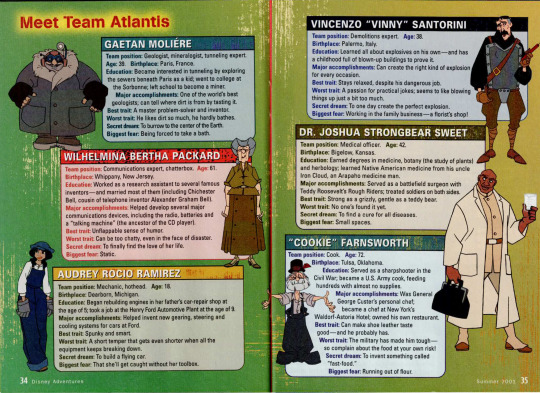
Written by: Deborah Barnes
Published in: Disney Adventures Collector’s Issue! Atlantis: The Lost Empire Volume 11, Number 6 (pg.32-35).
Publisher: Buena Vista Magazines Inc.
Publication date: circa July 2001.
(continued from In Search of Atlantis: The Lost Empire, continued in Dive!)
Text:
Meet Team Atlantis
Find out cool facts about the brave explorers who go in search of the lost city of Atlantis!
In 1914, a young adventurer named Milo Thatch dreamed of completing his grandfather's quest to find the legendary lost city of Atlantis.
Though some people thought Milo was crazy, a wealthy businessman agreed to sponsor Milo's expedition. Milo joined a group of daredevil explorers on a dangerous mission that took them under the sea and to the center of the Earth.
MILO JAMES THATCH
Team position: Linguist, major brainiac. Age: 32.
Birthplace: Fishkill, New York.
Education: Earned doctorate degrees in linguistic theory and dead languages from Oxford University in England.
Major accomplishments: Graduated from high school at age 11; ranked as one of the world's best linguists; translated ancient documents that reveal the location of Atlantis.
Best trait: Milo never gives up.
Worst trait: Love of work doesn't leave much time for a social life; best friend is his Persian cat, Fluffy.
Secret dream: Milo's one and only dream is not so secret: Find Atlantis.
Biggest fear: That he might be wrong—that Atlantis doesn't really exist.
LYLE TIBERIUS ROURKE
Team position: Expedition commander, serious dude. Age: 54.
Birthplace: Beaumont, Texas.
Education: Graduated second in his class from the U.S. Military Academy at West Point (in New York).
Major accomplishments: Led the charge in tons of famous battles as an Army captain; won awards for leadership and heroism; saved the life of his commanding officer.
Best trait: Total focus on his mission.
Worst trait: A cruel streak—and quick temper! Both make him a little scary.
Secret dream: To make lots of money.
Biggest fear: That he might actually fail on a mission.
HELGA KATRINA SINCLAIR
Team position: Second in command. Age: 30.
Birthplace: Frankfurt, Germany.
Education: Studied with famous martial arts and weapons experts around the world; trained in military tactics and firearms under Commander Rourke.
Major accomplishments: One of only three living people to beat Commander Rourke in both unarmed combat and chess.
Best trait: Intelligent and cool under pressure.
Worst trait: Can seem icy and unfriendly.
Secret dram: To fight someone (or something) that's a real challenge.
Biggest fear: What is fear?
[page break]
Meet Team Atlantis
GAETAN MOLIÉRE
Team position: Geologist, mineralogist, tunneling expert.
Age: 39. Birthplace: Paris, France.
Education: Became interested in tunneling by exploring the sewers beneath Paris as a kid; went to college at the Sorbonne; left school to become a miner.
Major accomplishments: One of the world's best geologists; can tell where dirt is from by tasting it.
Best trait: A master problem-solver and inventor.
Worst trait: He likes dirt so much, he hardly bathes.
Secret dream: To burrow to the center of the Earth.
Biggest fear: Being forced to take a bath.
WILHELMINA BERTHA PACKARD
Team position: Communications expert, chatterbox. Age: 61.
Birthplace: Whippany, New Jersey.
Education: Worked as a research assistant to several famous inventors—and married most of them (including Chichester Bell, cousin of telephone inventor Alexander Graham Bell).
Major accomplishments: Helped develop several major communications devices, including the radio, batteries and a "talking machine" (the ancestor to the CD player).
Best trait: Unflappable sense of humor.
Worst trait: Can be too chatty, even in the face of disaster.
Secret dream: To finally find the love of her life.
Biggest fear: Static.
AUDREY ROCIO RAMIREZ
Team position: Mechanic, hothead. Age: 18.
Birthplace: Dearborn, Michigan.
Education: Began rebuilding engines in her father's car-repair shop at the age of 5; took a job at the Henry Ford Automotive Plant at the age of 9.
Major accomplishments: Helped invent new gearing, steering and cooling systems for cars at Ford.
Best trait: Spunky and smart.
Worst trait: A short temper that gets even shorter when all the equipment keeps breaking down.
Secret dream: To build a flying car.
Biggest fear: That she'll get caught without her toolbox.
VINCENZO "VINNY" SANTORINI
Team position: Demolitions, expert. Age: 38.
Birthplace: Palermo, Italy.
Education: Learned all about explosives on his own—and has a childhood full of blown up buildings to prove it.
Major accomplishments: Can create the right kind of explosion for every occasion.
Best trait: Stays relaxed, despite his dangerous job.
Worst trait: A passion for practical jokes; seems to like blowing things up just a bit too much.
Secret dream: To one day create the perfect explosion.
Biggest fear: Working in the family business—a florist's shop!
DR. JOSHUA STRONGBEAR SWEET
Team position: Medical officer. Age: 42.
Birthplace: Bigelow, Kansas.
Education: Earned degrees in medicine, botany (the study of plants) and herbology; learned Native American medicine from his uncle Iron Cloud, an Arapaho medicine man.
Major accomplishments: Served as a battlefield surgeon with Teddy Roosevelt's Rough Riders; treated soldiers on both sides.
Best trait: Strong as a grizzly, gentle as a teddy bear.
Worst trait: No one's found it yet.
Secret dream: To find a cure for all diseases.
Biggest fear: Small spaces.
"COOKIE" FARNSWORTH
Team position: Cook. Age: 72.
Birthplace: Tulsa, Oklahoma.
Education: Served as a sharpshooter in the Civil War; became a U.S. Army cook, feeding hundreds with almost no supplies.
Major accomplishments: Was General George Custer's personal chef; became a chef at New York's Waldorf-Astoria Hotel; owned his own restaurant.
Best trait: Can make shoe leather taste good—and he probably has.
Worst trait: The military has made him tough—so complain about the food at your own risk!
Secret dream: To invent something called "fast-food."
Biggest fear: Running out of flour.
#2001#July 2001#Disney Adventures#Buena Vista Magazines Inc.#article#Milo James Thatch#Lyle Tiberius Rourke#Helga Katrina Sinclair#Gaetan “Mole” Molière#Wilhelmina Bertha Packard#Audrey Rocio Ramirez#Vincenzo “Vinny” Santorini#Joshua Strongbear Sweet#Jebidiah Allardyce “Cookie” Farnsworth#Atlantis: The Lost Empire#lore#media
93 notes
·
View notes
Photo
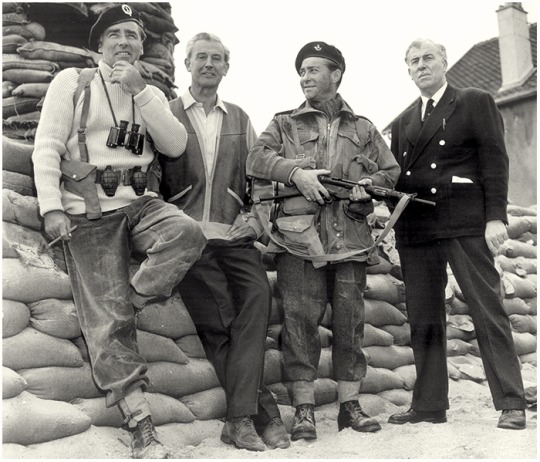
I never admitted to anybody during my entire military service that I had been an actor. I was terrified that I would be put in charge of Ensa [Entertainments' National Service Association]. Not even my closest friends knew I was an actor. I told them I was reading English at St Andrews University.
- Richard Todd
In his heyday in the 1950s and 1960s, Richard Todd was Britain’s leading matinee idol. If you love old movies, you’ll have seen Todd in one of his starring roles in “The Virgin Queen” opposite Bette Davis, “Stage Struck” with Marlene Dietrich, or “The Dam Busters” for which he won a Golden Globe Award. He was the tough little Scotsman in the wartime weepie “The Hasty Heart” and had audiences madly hunting for hankies.
Those were the days when Todd streaked across North American film screens as virtually every romantic hero from Rob Roy to Robin Hood. Ian Fleming chose him to play James Bond in “Dr. No” in 1962, but a schedule clash meant Sean Connery stepped into the role.
Little less known is the fact that he was also among the first British soldiers and the first Irishman to land in Normandy on D Day. More specifically, he participated in Operation Tonga during the D-Day landings in Normandy on 6 June 1944.
So it must have been surreal for Richard Todd the hearthrob actor to find himself playing Major John Howard in the epic movie ‘The Longest Day’ (1962) based on Cornelius Ryan’s book. Not least because he served with Howard and took part in the fighting at Pegasus Bridge that Major John Howard was tasked to secure on D Day.

Richard Todd was born in Dublin, Ireland, in 1919. His father was a medic in the British Army and, as his posting required, the early years of his life were spent in India. The family settled in Devon upon their return to England, and Richard was educated at Shrewsbury Public School, in Shropshire. The theatre was his first love, and he furthered his dramatic skills at the Italia Conti school, thereafter moving to Scotland where he helped to form the Dundee Repertory Theatre.
When War was declared, Todd went to St. Andrew's University on the following day to volunteer. He was not a member of the University, but he not only convinced the selection unit that he was, but also added that he had been reading English there for six months, and that he had obtained a Cert A in his school cadet corps; a key point to being accepted as an officer. Despite success in passing off this invented career, Todd was to be disappointed by a lack of interest in him thereafter.

Becoming increasingly desperate to get into the War before it ended, he sent numerous letters to the War Office to press his case, which, in June 1940, was finally noticed.
Accepted by the King's Own Yorkshire Light Infantry, Todd went to Sandhurst to receive his officer training. He had a very lucky escape here when he was in a corridor on the second floor of a building when it was hit by a bomb, and he was blown into the garden outside by the blast. He got to his feet in the darkness and did not feel particularly affected by it, but an examination by torchlight revealed that his whole body was covered in blood from numerous small wounds.
A spell his hospital delayed his passing out from Sandhurst until early 1941. Celebrating in London, he narrowly avoided death again when he found his usual haunt, the Cafe de Paris, was too crowded to admit him and so he went elsewhere; it was hit by a bomb that same night and 84 people were killed.
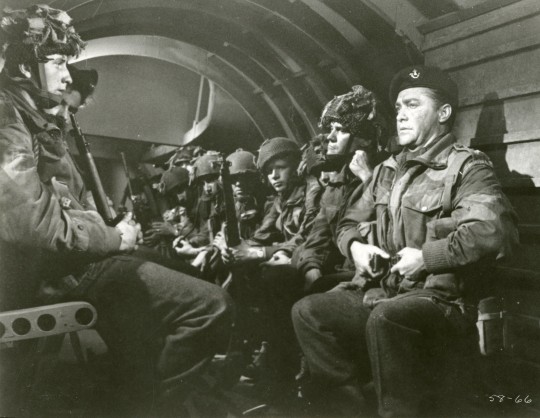
His Battalion, the 2nd/4th Battalion The King's Own Yorkshire Light Infantry, was posted to XII Corps in defence of Kent, where a German invasion if it came would almost certainly land. Todd was given command of the infantry in the Dymchurch Redoubt, a fort of the Napoleonic era mounting two six-inch guns.
In the event of an invasion, this would certainly have been a primary target for the enemy, and those manning it were told that, with the main defensive line far to their rear, they would be left to fight to the end. General Montgomery commanded XII Corps at this time, and his characteristic emphasis on training and preparedness led to the formation of the first Battle Schools. Richard Todd attended one of these, and the experience allowed him to run his own School when, in December 1941, he was sent to Iceland with the 1st/4th King's Own Light Infantry to be trained in arctic and mountain warfare.
Returning to England in September 1942, he eventually ended up in the 7th (Light Infantry) Parachute Battalion of the 6th Airborne Division. He was among troops of the 7th (Light Infantry) Parachute Battalion who, at 00:40 hours on 6 June 1944, landed behind the Normandy beaches in a cornfield, perilously close to tracer fire.
Todd scrambled into a wood and with 150 other paratroopers reached Pegasus and Ranville bridges, vital crossings to allow Allied forces to break out from the beachheads into Normandy. They had been seized by a glider force from the Ox and Bucks Light Infantry under the command of Major John Howard, who needed reinforcements to fend off ferocious German attacks.
In his memoirs, Caught in the Act, Todd would write of the carnage, “There was no cessation in the Germans' probing with patrols and counter-attacks, some led by tanks, and the regimental aid post was overrun in the early hours. The wounded being tended there were all killed where they lay. There was sporadic enemy mortar and artillery fire we could do nothing about. One shell landed in a hedge near me, killing a couple of our men.”
Todd would go on and see action at the Battle of the Bulge and push into the Rhine into Germany. After VE day, his division returned to the UK for a few weeks, then was sent on counter-insurgency operations in Palestine. During this posting he was seriously injured when his Jeep overturned, breaking both shoulders and receiving a concussion. He returned to the UK to be demobilised in 1946.
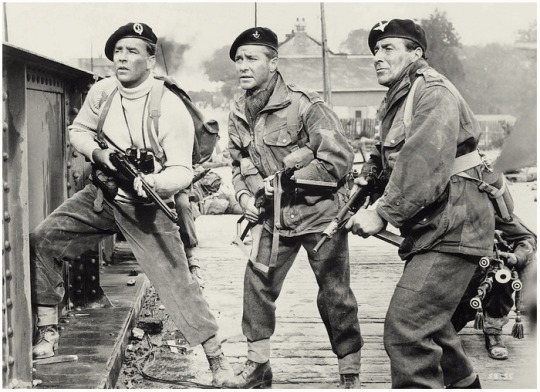
In 1962, Todd was given the part of Major John Howard in the film adaptation of Cornelius Ryan's book about the D-Day landings, ‘The Longest Day’ (1962). Due to the nature of cinema, it was impossible for the film to give a thorough reflection of the role of the 6th Airborne Division during the Invasion, and as such their activities were solely represented by a reconstruction of the capture of Bénouville Bridge by Howard's coup-de-main force. Although briefly mentioned, the role of the 7th Battalion in the defence of the western bridgehead was largely ignored, and so it appeared as if the defence of the bridge rested only on Howard's men.

Naturally, the omission of their fierce defence of Bénouville caused some resentment amongst veterans, not least because one of their own was championing this re-working of history. Todd, however, regarded ‘The Longest Day’ (1962) as a film rather than a documentary, and his part in it was simply that of an actor doing as he was told.
Richard Todd would never have guessed, that in 17 years since he was on Pegasus Bridge as a paratrooper that he would standing there again as an actor portraying Major John Howard who was given the order: 'Hold,… until relieved'. It had to be Richard Todd’s 'twilight-zone' moment.
The ‘relieve’ for Howard had to come from Lord Lovat and his troops, who had landed on SWORD Beach, and were legging it towards Pegasus Bridge.
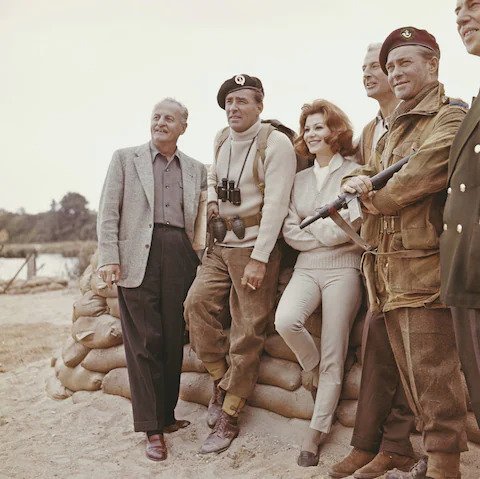
Before the shooting of the scenes were started at Pegasus Bridge, the film producer of The Longest Day, Darryl F. Zanuck, had the real life Lord Lovat and Major John Howard brought over to meet the men who were going to portray them (Peter Lawford portrayed Lord Lovat). The men had not seen each other since 6 June 1944.
Photo (above). From L-R: Peter Lawford, Lord Lovat, Richard Todd, Major John Howard.
#todd#richard todd#quote#british army#D Day#DDay#Normandy#pegasus bridge#war#second world war#major john howard#parachute#battle#actor#soldier#paratrooper#the longest day#film#movie#cinema#britain
109 notes
·
View notes
Text
Miraculous head cannons - SEASON 5 spoilers ahead
Felix, Chloe and Adrien watched The Hunger Games during Felix's visits to Paris. Adrien's favorite character was Peeta while Felix admired Finnick and Chloe adored Effie. After Season 5 , both cousins introduced the films to Kagami and Marinette during their first double date. Marinette's favorite character was Katniss while Kagami loved Johanna.
Zoe’s father's name was Andrew lee.
Zoe’s father was a high ranking military captain who was friends with Colt Fathom - who was an arms dealer.
Zoe’s father being in the military meant he traveled a lot and was very busy but still had time for his daughter. He loved Zoe a lot but when Zoe did something wrong , he wasn't afraid to discipline her. However when Zoe was 11 a war broke out in a foreign country so Zoe’s father went abroad to fight. This caused Zoe to be put into boarding school because her dad wasn’t able to care for her. He however was still a decent father and visited Zoe as much as he could. When Zoe told him about the bullying on the phone , he brought Zoe tickets to Paris because he had no other family to send her too. He wanted for Zoe to get her to know her half-sister and promised her it would be temporary and he will come back for her soon.
Zoe and Felix knew each other due to their dads being friends
Chloe respected Emelie and saw Emelie as a mother figure. The brooch she gave to Sabrina was given to her from Emelie. Emelie gave her the brooch because she was Adrien's only friend .
Zoe is a fan of The Lumineers.
Chloe and Felix listen to Marina and the Diamonds. It's one of the few things they have in common and in fact the only times Felix and Chloe got along was when they talked about Marina😆😆
Sabrina and Chloe watched Totally spies when they were younger.
Chloe always knew the Jean-Armands name. She only got his name wrong on purpose just to get attention from her mother. These are just my head cannons. Feel free to disagree :) . Please stay respectful
#miraculous ladybug#mlb#mlb season 5 spoilers#mlb season five#mlb writers salt#astruc salt#mlb salt#adrien agreste#felix fathom#kagami tsurugi#chloe bourgeois#zoe lee#colt fathom#emilie agreste#emelie graham de vainly#Thomas astruc#marinette dupain cheng#andre salt#gabriel salt#chloe deserves better#headcanon#totally spies
43 notes
·
View notes
Text
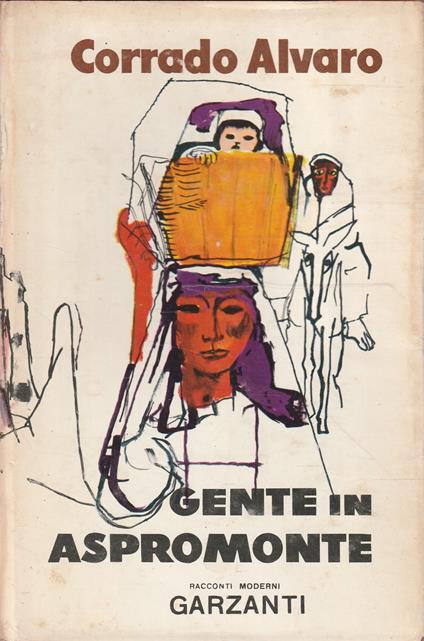
Revolt in Aspromonte - An early 20th century's tale of hopeless poverty in Southern Italy's Calabria
Gente in Aspromonte (which was translated in English as Revolt in Aspromonte) written in 1930 by Italian journalist and novelist Corrado Alvaro, is a short but powerful novel of peasant life in Southern Italy's Calabria and is recognized by Italians as one of the classics of their modern literature.

Gente in Aspromonte is the story of the shepherd Argirò and his family––of their struggle for survival, and some shred of dignity, against the degrading oppression of the feudal family which controls their village. In his despair, Argirò believes that if only he can educate his youngest son, Benedetto, to be a priest he will achieve status and revenge on those who have wronged him. To this end, he sacrifices himself and the gentle older brother, Antonello. A simple tale––but told with a poetry of style which gives it a somber beauty.

Corrado Alvaro (San Luca, 15 April 1895 – Rome, 11 June 1956) was an Italian journalist and writer of novels, short stories, screenplays and plays. He often used the verismo style to describe the hopeless poverty in his native Calabria.
Gente in Aspromonte, which examined the exploitation of rural peasants by greedy landowners in Calabria, is considered by many critics to be his masterpiece.

He was born in San Luca, a small village in the southernmost region of Calabria. His father Antonio was a primary school teacher and founded an evening school for farmers and illiterate shepherds. Alvaro was educated at Jesuit boarding schools in Rome and Umbria. He graduated with a degree in literature in 1919 at the University of Milan and began working as a journalist and literary critic for two daily newspapers, Il Resto del Carlino of Bologna and the Corriere della Sera of Milan.

He served as an officer in the Italian army during World War I. After being wounded in both arms, he spent a long time in military hospitals. After the war, he worked as a correspondent in Paris (France) for the anti-Fascist paper Il Mondo of Giovanni Amendola. In 1925, he supported the Manifesto of the Anti-Fascist Intellectuals written by the philosopher Benedetto Croce.
In 1926 he published his first novel L'uomo nel labirinto (Man in the Labyrinth), which explored the growth of Fascism in Italy in the 1920s. A staunch democrat with strong anti-Fascist views, Alvaro's politics made him the target of surveillance of Mussolini's Fascist regime. He was forced to leave Italy and during the 1930s he travelled widely in western Europe, the Middle East, and the Soviet Union. Journeys he later recounted in his travel essays. L'uomo è forte (1938; Man Is Strong), written after a trip to the Soviet Union, is a defence of the individual against the oppression of totalitarianism.
Alvaro is noted for his realistic, epic depictions of the Italian poor. His later work portrayed the contrasts between a yearning for the simple, pastoral way of life, and the aspiration to achieve material success that attracts people to the city. He died in Rome in 1956.
Follow us on Instagram, @calabria_mediterranea
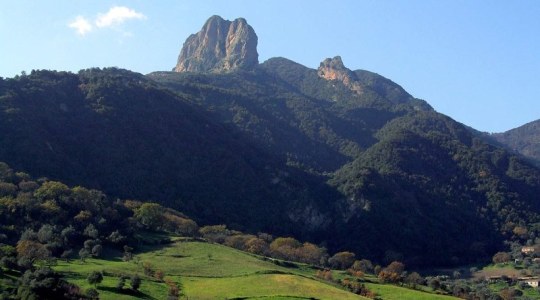
#gente in aspromonte#corrado alvaro#italian literature#calabria#italy#italia#south italy#southern italy#letteratura italiana#letteratura#literature#authors#aspromonte#peasants#peasant life#1930s#1930#1930's#poverty#poor#san luca#mountains#antifascismo#antifascism
16 notes
·
View notes
Text
5 Dark Academia Movies That I Don't Find Too Many Other People Posting Very Frequently About
Note my definition of Dark Academia: dark because somebody dies (at a stretch, the darkness can be oppression or abuse from which no one necessarily dies but it still gets pretty dark—or if someone attempts suicide or murder then I count it as dark); academia because they go to uniform school or prepster university (the academia part can be an intense study, discussion, or research of a subject even though they are not at a campus.)
1. The Moth Diaries 2011
The book was better, more detailed, but the movie is still pretty good. The campus is peak neoclassical splendor, the uniforms are on-point aesthetic, and the darkness is gruesomely bloody and also it's on fire. The book is set during the school year of 1970 to 1971, but the movie is set in 2010 thereabouts.
2. "O" 2001
A modern retelling of Othello by William Shakespeare set at a prestigious boarding school. Adapting classical literature in a high school was trendy at the time, trying to capture the magic of Clueless 1995, and in my opinion "O" was the most glammed-up production with the most dark academia atmosphere out of all of them.
3. Educating Rita 1983
A working-class British young woman takes a social enrichment outreach education opportunity to study literature, in hopes that a study in the humanities will give her a better sense of self. Her tutor is a "failed" poet who struggles with substance addiction. Unbeknownst to them, both their lives are at the crux of change. In their consistently non-romantic conversations together, they unpack class discrimination in academia and society, as well as argue about the meaningfulness versus empty pretensions of studying humanities.
Nobody dies, well all right somebody almost dies for pretentious academic reasons...but the conversations leave a lot between the lines.
4. Private Romeo 2011
A modern retelling of Romeo and Juliet by William Shakespeare set at an all-boys military school. Sure, it's not the Oxbridge-Camford or "Hollywood New England" collegiate aesthetic...but it is very gay, a feature that I hope lends the movie some compensatory merit in this context. Juliet's a boy. Romeo is still a boy. Nurse is a boy. Juliet's mom is a man. Paris is an abstract concept. They are studying Romeo and Juliet at the military school English class at the same time that they are living and speaking the lines in Romeo and Juliet, so it gets surreal and I recommend getting more into the emotion of it than get caught up in what the lines they're saying are supposed to mean.
This should be chaotic academia or frenzy academia, but there's homophobic hazing and bullying so I think that's pretty dark.
5. Bare: a Pop Opera ???? There was supposed to be a movie but I deduce that it's stalled in development purgatory. I have not liked a movie adaptation of a stage musical since Chicago 2002, so I guess I don't really like movie adaptations of stage musicals—but I definitely want my current hyperfixation to be more accessible than a Spotify album oh hey while waiting for this adaptation to happen you can listen to the Spotify album. It's an operetta, so it's sung-through and you won't miss out on any story dialogue unlike with other musicals. Here's my argument for B:APO being Dark Academia.
DUE TO THE FACT THAT THE #5 SPOT ON MY LIST DOES NOT EXIST...WHAT DARK ACADEMIA MOVIES DO YOU THINK SHOULD BE IN THIS SPOT IN THE MEANTIME?
I CAPSLOCK IN ANGUISH THAT THE B:APO MOVIE DOES NOT EXIST YET AND PROBABLY NEVER WILL.
YOUR RECOMMENDATIONS ARE CONSOLATION.
Honorable Mentions:
The History Boys 2006 had one subplot I was bothered by at first and then grew to despise which is really too bad because this movie had racial diversity, directly addressed misogyny in academia, and had canon gays in a love triangle — but it is dark and it doesn't really seem to know that it's dark.
The Children's Hour 1961 "dark academia is mlm while cottagecore is wlw" WRONG watching this movie to consider evidence of dark academia wlw is part of your yuri duty! remember our history!
Never Let Me Go 2010 I can't describe objectively because I read the book at a time in my life that I was having a time at that time. The movie is a faithful adaptation. I re-read it recently and I think it's more Dark Academia than I gave it credit for, but if you're not into Contemplative Dystopia then I completely understand it not being your thing.
Like Minds 2006 — Huh, so 2006 was a busy year for this genre that did not yet exist at the time. Witness the folie à deux of 21st century teenaged Templar Knight kinnies who are also homoerotic serial killers. (Waves to the people that introduced me to this movie, who—contrary to the header of this post—actually do post about it.)
Rope 1948 does have some activity that I've caught recently enough, but I thought maybe it wouldn't be considered Dark Academia right away because it doesn't take place at a school. It takes place at a dinner party where ex-schoolfriends talk to their philosophy professor who they remain well-acquainted with after graduation, an interrogation of putting this professor's morally heinous philosophy into practice. Also there is a corpse at this dinner party. There's your academics and your darkness, so there's your dark academia.
#(yes BAPO fandom i am using the colon in b:apo for the benefit of the uninitiated)#If We Were Villains#<- tagged due to ALL THE SHAKESPEARES IN THIS LIST#dark academia#The Moth Diaries#O 2011#Educating Rita 1983#Private Romeo 2011#Bare: a Pop Opera#The History Boys 2006#The Children's Hour 1961#Never Let Me Go 2010#Like Minds 2006#Rope 1948
39 notes
·
View notes
Text

Military School in the 7th district of Paris
French vintage postcard
#school#postal#old#7th#photo#photography#briefkaart#france#military school#district#sepia#postkaart#th#carte postale#postkarte#historic#vintage#postcard#tarjeta#paris#ephemera#french#military#ansichtskarte
4 notes
·
View notes
Text

1917 04 Vieux Charles - Russell Smith
Although technically ranking second to Rene Fonck among the French aces of World War I, Georges Guynemer was first in the hearts of his countrymen during the war due to his humility, skill and devotion to his country. Born in Paris in 1894, he was a frail, sickly child and was home schooled until age 14. Though lacking in physical skills, Georges showed an aptitude for both target shooting and mechanics - two skills which would serve him well as a military aviator. Although he was originally rejected from military service due to his poor physical condition, he finally passed the medical examination on the fourth attempt after his father intervened on his behalf. He succeeded as an aviator through his enormous drive and self-confidence. Guynemer joined Escadrille MS.3 in June of 1915 and served in the same unit for his entire service. Over the course of his service the unit transitioned from Moraine Saulniers to Nieuports to SPAD VIIs and XIIIs, thus changing designations from MS.3 to N.3 and the SPA.3. The aircraft of SPA.3 were famous for the red storks which emblazoned their fuselages. The stork was known to nest annually in the chimneys of Alsace-Lorraine, and the squadron’s logo symbolized France’s determination to return and retake that region. Guymener’s personal aircraft often bore the marking “Vieux Charles” (Old Charles), and this particular SPAD VII, S'254, now hangs on display at the Musée de l'air et de l’Espace at Le Bourget Airport in Paris.In February 1917 Guynemer became the first Allied pilot to shoot down a German heavy bomber, and in March, 1917, he became the first Frenchman to shoot down three enemy planes in one day. In May, 1917,he downed seven German aircraft. Perhaps the greatest story from his career was one told by German Ace Ernst Udet (A Lesson From the Master). His success earned him enough influence to affect French fighter aircraft development. In December 1916, he wrote a letter to the chief designer at SPAD criticizing the SPAD VII as inferior to the German Halberstadt. As a result, SPAD developed two new but very similar models, the SPAD XII and SPAD XIII. On Sept. 11, 1917 he failed to return from a combat mission. He was confirmed missing in action by his squadron commander Major Brocard. His death was finally confirmed by the Germans who stated that a sergeant in the 413th Regiment found and identified the pilot's body, and news of his death was officially announced in Paris two weeks later.
22 notes
·
View notes
Text

Name: Lieutenant, Andy 'Achilles' Graves
(Yes, He is Graves' younger brother- Dont come after me for it. It just fits)
Age: 29
Gender: Male
Nickname(s): Barracks bunny, Graves, Phillip, and The Brawn
(He gets called by his brothers name by accident all the time. It pisses him off and he snaps at whoever calls him it no matter their rank)
Ethnicity: White
Nationality: American
Languages: English and Spanish
Call sign: Achilles
Rank: Lieutenant
Skin Tone: Olive
Eye Color: Grey
Hair Color: Dark brown
Hair Length: Short, Think Graves hair but curlier.
( Normally, He'd keep it long and in a wolf cut but he's dedicated to the army)
Height: 5'9
Weight: 130
Scars/Marks/Burns: He has a long scar along his neck that runs from the left side of his chin down to his collarbone, He has 2nd degree burns around his wrists, and there's some scar and burn marks along his back.
Tattoos: He has one. It's in morse code and it's his best friend's birthday and death date.
Personality:
Andy is very charismatic and is always the first to get a smile out of everyone. He isn't overly dramatic but he does come up with quick come backs and his voice drips with sarcasm. Normally he could be found standing near one of his friends with a dead and cold expression on his face. But, When he speaks you can tell he's full of life and just a hoot to be around. Despite being so openly charismatic not a lot of people know where he's from or who his family is. After Grave's betrayal he worked and bribed many officers to delete any affiliation with his brother off of his record as he wanted nothing to do with him.
Likes: Explosives, Rpgs, Sharks, a good scotch, and just general chatter
Dislikes: Graves, Any personal talk, Loud noises, and people yelling at him. (He will yell back)
Habit(s): Checking his heart beat, biting on his nails. constantly checking his blind spots, and the excessive need to always be in uniform.
Talent(s): He excels in covert missions and being the brute force. He'll barge into a room with no care for his own life, Is normally used as a battering ram.
Reputation: He has a pretty good relationship with most of the people he works with. While most like him they also get very unsettled by how he can be so open and talkative yet have no one even know his own name.
Relationship(s):
Phillip Graves- Brother
Preferred Weapon(s):
Assault rifles, Rpgs, and the Ax-50 Gunsmith
Agility: 9/10
Hand-to-Hand Combat: 7/10 (Tries to avoid it if he can but can knock someone out)
Long Range Accuracy: 10/10
Defense: 9/10
Offense: 6/10
People Skills: 4/10
Birthplace: Paris, Texas
Character Background:
Andy's father was a veteran and was Dishonorably discharged after getting into a fight with his commander. Unlike Graves, Who grew up without their father around (Headcanon), He grew up with his father being extremely present and way too involved. Their father was cruel and aggressive. With Graves being too old to manipulate, his father decided to try and make Andy his super soldier. He wanted Andy to be everything he wasn't so Andy was beaten and yelled at constantly, Graves was too but Andy never saw any of what their father did to Graves. All he ever saw Graves being pulled onto his father's lap and having their father run his hands through Graves' hair. To Andy, Graves was the favorite, As he grew up the punishments for Andy grew more and more violent. They ranged from being violently beaten to being thrown out in the cold. When he was 17 he had gotten into a fight with his father where he was abruptly sent to Military school. He spent the rest of his school years in the military school with Semi-regular visits from Graves. In these times they repaired their relationship and helped each other heal.
Andy eventually ended up joining the army. He had no other goals and he excelled in boot camp. He would even send letters to Graves all the time, They would go back and forth about what each of their lives was like in their different fields.
About three weeks before Graves and Andy were meant to meet up Andy got word of what his Brother did. He became pissed and every bottled up hatred he had for his brother bubbled to the surface. On the week that they were meant to meet up, he and his best friend Isaac at the time decided to go to a few bars during their down time and just have fun exploring the nearby town. On their way back to the base Andy's best friend, Commander Isaac was shot and killed by a Iraq mercenary who he had spared on their last mission.
The mercenary hunted down Isaac and killed him right In Front of Andy. The only reason he was able to recognize Isaac was because Isaac didn't like face coverings and never really wore them when on the battlefield.
His best friend, Andy held Isaac in his arms and called for backup. By the time any paramedics got their Isaac was dead. He had died on impact but Andy was in denial. He did everything he could to save Isaac. It shook Andy to his core and it took many months of probation, Therapy, and Psych screenings before he went back into the field.
When he did go back he was Achilles. Just Achilles, He'd wear tented tactical goggles and a medical mask constantly. It was impossible to see him without them as he swore to himself that no person he ever killed would be able to hunt him down like they did Isaac. He only has two close friends and hasn't spoken to his brother in ages. He's a part of a Special task force that takes jobs where it's needed. They're mostly covert and are meant to get in and out by doing anything and everything necessary to complete their task.
14 notes
·
View notes
Text
The fact that Israel has been and continues to target and bomb THE most vulnerable places -hospitals, refugee camps, schools, and places of worship -should be horrifying to us all. Don't let American or any Western media source numb you to ANYTHING that happened or continues to because this is beyond inhumane, immoral, and criminal. And yes, this also includes communities all around the world with whom the media has normalized, ignored, or silenced genocides and imperial/colonial violence (past, and ongoing).
Let me make it clearer for folks who still don't think this is a genocide being concealed by Western media in Palestine by reminding ya'll some of what has happened:
Israel bombed a major academic institution in Gaza recently, Al-Azhar University, and Western news media outlets were neither shocked nor grieved over the deliberate destruction of Gaza's educational space. When Israel bombed the oldest Greek Orthodox Church in Gaza, the Western world barely batted an eyelash; but when Notre Dame went on fire in Paris, the world grieved for over a week.
Israel fighter jets/warplanes bombed 3 refugee camps: Jabalia refugee camp (which was considered THE most devastating strike at the time: killing at least 50 Palestinians and injuring 150; some other reports suggested higher -in the hundreds). Bureij refugee camp, where over a dozen people were killed. And most recently, al-Maghazi refugee camp, where dozens of people were killed. At all these spaces, Palestinian people are SEEKING REFUGE & SHELTER. Some of the many places that should be SAFE, but Israel's defense?? Hamas commanders were potentially there. Based on HUNCHES -not with ANY confirmation whatsoever... and even so, if we're all living in the real world here -why would a space that is keeping tens of thousands of innocent civilians safe be a place any country/power targets unless there were nefarious intentions?
Israel also bombed and continues to bomb hospitals (and near them). The first, and most horrifying we heard of at Al-Ahli, where about 500 people were either killed or injured. It was also the first time we got Israel's start of their ever-failing PR game of 'but it was actually a Hamas rocket,' -of which Israel claimed was a Islamic Jihadist strike -despite ground footage and experts/people who served in the US military DEBUNKING that absurd lie. Israel even tried to EDIT a fake video about the event to evade accountability for this WAR CRIME. And yet, despite all I've mentioned before, on top of video evidence of white phosphorus being air dropped too, THEY'RE NOT BEING INVESTIGATED BY INTERNATIONAL CRIMINAL COURTS. Let's also not forget to talk about how Israel has shelled/devastated al-Shifa hospital -a place of critical care for cancer patients, and one where MANY journalists take refugee to charge their equipment/phones/where they edit their work because it's one of the only places with solar panels --is being targeted.
As a few days ago, the Palestinian health minister said: "55% of health sector partners had to suspend operations" due to lack of fuel, "16 out of 35 hospitals in Gaza had to shut down" due to lack of fuel shortages and/or Israeli bombing. There are around 5000 Palestinian women who will give birth this month/in the coming weeks, and without access to proper care, disasters will be eminent.
Most recently, it was reported that al-Quds Hospital will run out of fuel in less than 48 hours; this specific hospital has equipment used to help babies on incubators, and thus will be rendered useless. Israel bombed/shelled this hospital to the extent where it's going to shut down, and they're now LYING about storage spaces on hospital sites by saying they are tunnels, when they are NOT. Blueprints were even uploaded to prove they're a small space; but, despite being DEBUNKED immediately, western media has made it seem like it's a hiding place for Hamas.
Israel has also bombed ambulances, medical convoys (one most recently in front of al-Shifa hospital, killing 13 people), and has labelled independent Palestinian journalists as terrorists and is intending to DOXX them in the coming days so their information is widely available to the IDF/Israeli military.
And the most terrifying news I heard today from letstalkpalestine's backup account: "The UN estimates there’s only enough food in Gaza for the next 5 days 🚨"
For anyone still saying that Israel is a victim, and they they are just 'defending,' themselves still -have more than some shame, have some more humanity. Israel has been destroying infrastructure in Gaza for a reason, and that should terrify you, not fuel your pro-Israel agenda.
This is a genocide, not a war. I repeat: this is a GENOCIDE not a war.
#feminist#feminism#israel is an apartheid state#freepalastine🇵🇸#free palestine#free gaza#gaza#israel is committing genocide#israel#genocide#israeli propaganda
31 notes
·
View notes
Text


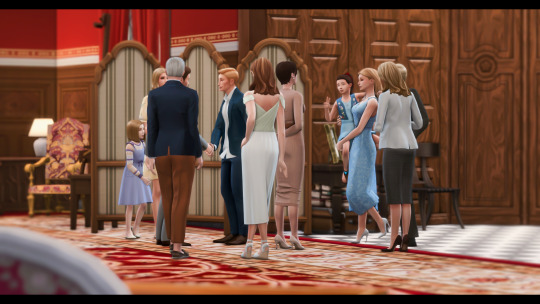


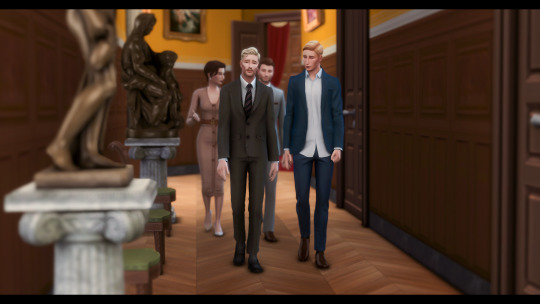


⚜ Le Cabinet Noir | Palais des Tuileries, 17 Prairial An 230
Beginning ▬ Previous ▬ Next
Napoléon V and his fiancée Charlotte travelled south of Paris for the night to meet the extended Mortemart family.
Rochechouart de Mortemart family
Main branch: Duke Casimir, the eldest. He is married to the Duchess Manon. They are the parents of Charlotte, their only daughter and heiress.
Collateral branch: Duke Casimir's brother, Count Charles. He is a highly reputed journalist. He is married to Countess Violaine. They have two children: the eldest, Aimery, is at Saint-Cyr military school. The youngest, Inès.
Duchess Manon de Mortemart had a sister: Diane, wife of Gabriel de Grandmare. They had two daughters: Gabrielle and Louis.
⚜ Traduction française
Napoléon V et sa fiancée Charlotte se rendent pour une nuit au sud de Paris afin de rencontrer la famille élargie des Mortemart.
Famille de Rochechouart de Mortemart
Branche principale : le duc Casimir, l'aîné. Il est marié à la duchesse Manon. Ils sont les parents de Charlotte, leur fille unique et héritière.
Branche collatérale : le frère du duc Casimir, le comte Charles. C'est un journaliste très réputé. Il est marié à la comtesse Violaine. Ils ont deux enfants : l'aîné, Aimery, à l'école militaire de Saint-Cyr. La benjamine Inès.
La duchesse Manon de Mortemart a une soeur : Diane, épouse de Gabriel de Grandmare. Ils ont deux filles : Gabrielle et Louis.
#simparte#ts4#ts4 royal#royal simblr#sims 4 royal#sim : louis#sims 4 fr#sims 4#gen 2#sims 4 royal story#sims 4 royal simblr#sims 4 royalty#sims 4 story#le cabinet noir#ts4 royals#ts4 royal family#ts4 royal simblr#ts4 royalty#ts4 royal legacy#ts4 storytelling#ts4 story#sim : charlotte#sim : casimir
52 notes
·
View notes

